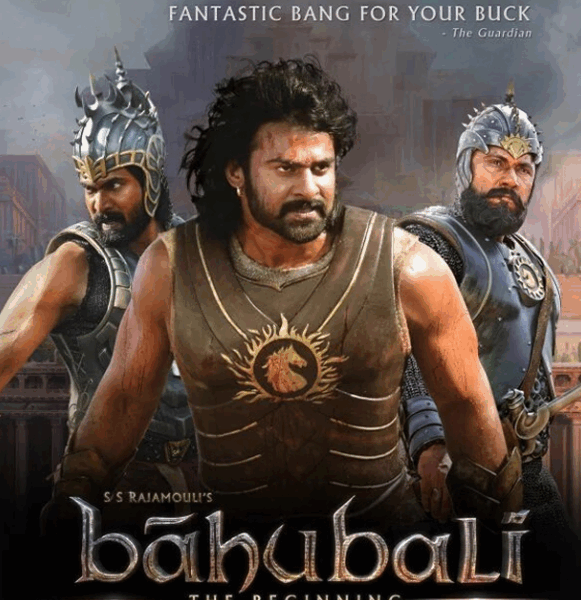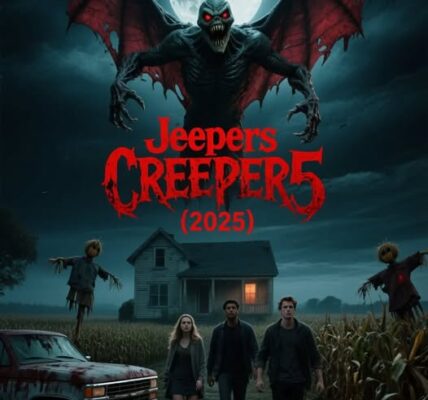1. Plot Summary
In the ancient, mythic kingdom of Mahishmati, a brave and charismatic young man named Shivudu (later revealed as Mahendra Baahubali) is raised by a tribe in relative obscurity, unaware of his royal heritage. He becomes fascinated with a mysterious princess, Avantika, who belongs to a rebel group intent on rescuing the imprisoned queen, Devasena, from the tyrannical usurper Bhallaladeva. Driven by love and curiosity, Shivudu climbs a massive waterfall to Mahishmati, where he witnesses the kingdom’s suffering under Bhallaladeva’s rule.
Simultaneously, the film flashes back to the era of Amarendra Baahubali, a just and heroic king loved by the common people, and the roots of the rivalry, betrayal, and power struggle that lead to the current tragedy. The narrative gradually unravels how power was stolen, how loyalties were broken, and how Shivudu’s destiny is entwined with the legacy of his father.
2. Notable Elements
- Epic scale & visual grandeur: The film invests heavily in magnificent sets, massive battle scenes, and sweeping landscapes. The waterfall climb (Shivudu’s ascent) is a standout sequence that combines spectacle, tension, and symbolic ascent.
- Battle sequences: The war scenes, especially the clash between armies of elephants, cavalry, and foot soldiers, are choreographed on a grand scale and visually arresting.
- Character performances:
• Prabhas as both Shivudu and Amarendra Baahubali offers charisma, physical presence, and emotional heft in his heroic moments.
• Rana Daggubati as Bhallaladeva is imposing and ruthless—he anchors the villainy with gravitas.
• Anushka Shetty as Devasena and Tamannaah Bhatia as Avantika provide strong female presences—though their screen time and agency are more limited than the male leads. - Music & score: The soundtrack and background score (by M. M. Keeravani) enhance the emotional and epic tone, punctuating dramatic turns.
- Narrative structure (flashbacks & mystery): The film uses framing (Shivudu’s discovery) and flashback reveals to gradually peel back layers, which keeps audience curiosity high.
Some weaknesses include occasional overuse of CGI (some visual effects look less convincing), pacing that slows between big set pieces, and melodramatic moments that verge on cliché.
3. Themes & Messages
- Legacy & Destiny: The film asks whether birth and blood define one’s fate or whether one must rise to the challenge to fulfill legacy. Shivudu’s journey is about reclaiming what was lost and fulfilling duties of his lineage.
- Good vs Evil, Power & Corruption: Amarendra is a benevolent ruler; Bhallaladeva rules through fear and manipulation. The contrast highlights how power can corrupt and how virtues must be defended.
- Sacrifice & Loyalty: Many characters make difficult sacrifices — for honor, for love, for duty. The theme of loyalty (to people, to ideals) recurs throughout.
- Love & Rebellion: The romantic arcs (Shivudu–Avantika, Amarendra–Devasena) are intertwined with larger acts of rebellion and resistance. Love motivates courage.
- Rise from oppression: The people’s suffering under tyranny and their hope in a hero reflect themes of liberation, justice, and resistance to tyranny.
In relation to holiday or seasonal sentiments, Baahubali doesn’t explicitly lean on those, but one can see echoes: the struggle through darkness to light, unity in adversity, sacrifice for a greater good, and hope in a new dawn — motifs that often align with stories of renewal or redemption.
4. Personal Impressions
Watching Baahubali: The Beginning feels like returning to mythic cinema — larger than life, emotionally charged, and visually epic.
What I enjoyed:
- Its ambition: few Indian films before had dared such scale and spectacle in the fantasy / historical genre.
- Key scenes have real emotional weight — Amarendra’s valor, the betrayal in the royal court, the climactic escape.
- The waterfall climb and Shivudu’s entrance into Mahishmati felt symbolic and thrilling.
- The cast brings dedication; even supporting roles (villains, side characters) leave an impression.
- Its world-building and mythology laid strong groundwork for its sequel.
What felt less strong:
- The pacing in the second act sometimes lags — long interludes between battles or revelations.
- Some CGI is unpolished in wide shots or crowd scenes.
- The female characters, though present, sometimes play secondary roles relative to men — more could be done to deepen their perspectives.
- Some plot reversals or betrayals stretch credibility (though accepted in mythic logic).
Despite those, the film is a powerful start to a saga, and its strengths outweigh its flaws.
5. Audience Recommendations
You’ll especially enjoy Baahubali: The Beginning if:
- You like epic fantasy / historical sagas with mythic tone and grand battles.
- You want to see big visual ambition from Indian cinema—bold set pieces, scale, and scope.
- You enjoy stories with dual timelines, legacy, secrets, and reveals.
- You’re comfortable with some melodrama, symbolic logic, and sweeping emotional arcs.
You might be less satisfied if:
- You prefer tightly realistic stories or minimal fantasy elements.
- You demand consistent CGI quality or perfect pacing throughout.
- You need deeply developed female perspectives or internal character studies over spectacle.
6. Conclusions & Rating
Baahubali: The Beginning is a landmark film in Indian cinema: grand, bold, emotionally resonant, and breathtaking in scale. It may not be flawless, but it stakes a claim for mythic storytelling and leaves a lasting imprint. As the first part of a saga, it promises more.
Final recommendation: Watch it as a spectacle, an epic, and an emotional journey. It’s ideal for fans of grand narratives, fantasy, and cinematic ambition.
Star Rating: ★★★★☆ (4 out of 5)
Watch more:




